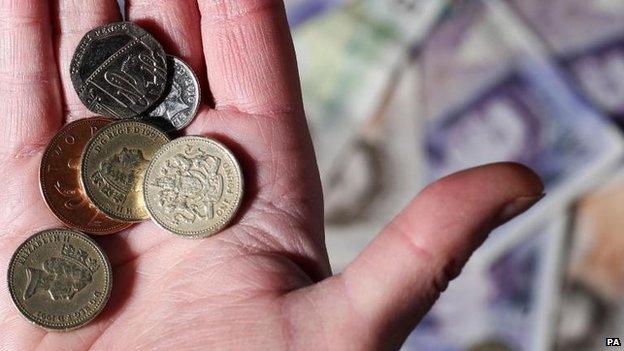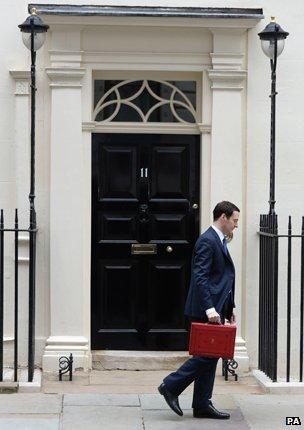A Budget for business and older people
- Published
- comments

This was a Budget for business and older people.
So in that sense, it was a very traditional Tory Budget - perhaps the most Conservative since the creation of the coalition government in 2010.
Is there a general election on the horizon?
There were two big categories of reform - help for businesses to invest and export; and a genuinely radical package of reforms of the tax system as it affects savings.
On business, the annual 100% tax allowance for investment has been doubled to £500,000.
And for exporters, the amount of government credit available to support overseas sales has also been doubled, to £3bn, and the interest rate charged on that credit has been reduced by a third.
There will be few moans about any of that, from the business community.
But more eye-catching are the reforms to savings.
Here, there are three initiatives.
First. the ISA limit is increased to £15,000. All of that can be invested in cash savings accounts for the first time, and it will be possible to convert existing ISA share accounts into cash accounts.
Second, £10bn of new fixed rate bonds at higher interest rates will be made available for those over 65.
And most significantly, the chancellor announced plans to abolish the requirement to invest in low-yielding annuities for those saving for retirement in defined contribution schemes.
That last reform will be widely welcomed by those approaching retirement - although it exposes the government to the risk that some who retire will consume their savings long before they die, potentially creating an increased longer term liability for the state.

UPDATE 1500 GMT
What is very striking is that the new freedom to cash in, being given to those saving for a pension, is expected to raise money for the Treasury.
How so?
Well, those taking the money, rather than buying a low-yielding annuity, will have to pay tax at their marginal tax rate on that cash (so a tax rate of 20% if they are basic rate taxpayers).
And the sums of revenue for the Treasury are non-trivial, a forecast £1.2bn by 2018-19.
Funnily enough, the maximum annual cost of the additional tax break for investment by businesses will be almost the same, £1,3bn, in 2016-17.
As for that increase in credit for exports, that appears to be a free lunch - or at least that's what the Treasury and the Office for Budget Responsibility (OBR) seem to believe.
By contrast, the cuts in tax payable to the government for carbon dioxide emissions by power generators - via what's known at the carbon price floor - will reduce revenues by £870m in 2018/19.
That reduction in the de facto price of carbon-based energy will doubtless by criticised by the green lobby.
Finally, and as I mentioned in my note of early this morning, the OBR has reduced its estimate of how much spare capacity there is in the economy.
What does that mean if the OBR is right?
Well, it reinforces the government's determination to press on with austerity, since (on the OBR's assessment) the current recovery is not generating sufficiently increased tax revenues or sufficiently lower benefit payments to eliminate the public sector's deficit or annual borrowing.
Also it implies that wage inflation may take off sooner than the government might find wholly delightful - for all its desire to see a rise in living standards - because any sign of significant inflationary pressures would force the Bank of England to increase interest rates.